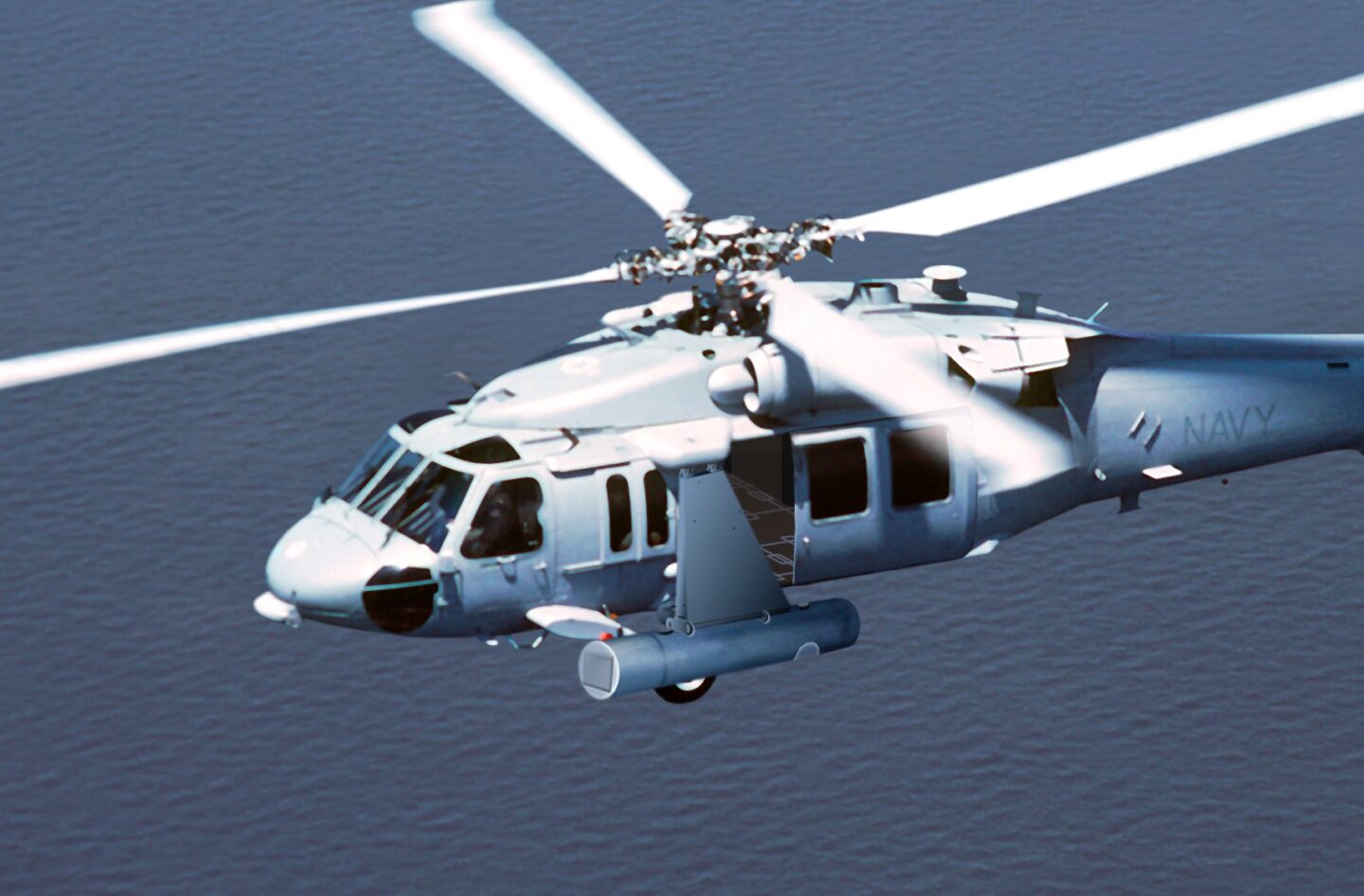Northrop Grumman Corporation has been awarded a contract by Korea Aerospace Industries, Ltd. (KAI) to provide Airborne Laser Mine Detection System (ALMDS) solutions and technical support for the Engineering, Manufacturing and Design (EMD) phase of the Republic of Korea’s Korean Mine Countermeasures Helicopter (KMCH) program. The EMD phase is expected to be completed in 2027. ALMDS is capable of untethered day or night operations, which allow it to attain high area search rates. ALMDS also provides accurate target geo-location to support follow-on neutralization of the detected mines. The ALMDS will be integrated into the MH-60S helicopter to provide a rapid wide-area reconnaissance and assessment of mine threats in littoral zones, confined straits, choke points and amphibious objective areas
“The mission of ALMDS is to detect, classify and localize floating and near-surface moored mines rapidly. KAI is convinced that the ALMDS integration will make a significant improvement to the Republic of Korea’s Navy mine detection capabilities. The program will also enhance our strategic partnership with Northrop Grumman in the defense domain,” said Chang-heon Han, executive vice president, rotary wing division, Korea Aerospace Industries.
“Our strategic partnership with KAI to bring ALMDS technology to the KMCH program builds on our decades of commitment to deliver advanced solutions that support the Republic of Korea’s Ministry of National Defense,” said Janice Zilch, vice president, multi-domain command and control (MDC2) programs, Northrop Grumman.

The ALMDS uses pulsed laser light and streak tube receivers housed in an external equipment pod to image the entire near-surface volume potentially containing mines. With untethered operations, it can attain high area search rates. This design uses the forward motion of the aircraft to generate image data negating the requirement for complex scanning mechanisms and ensuring high system reliability. ALMDS also provides accurate target geo-location to support follow on neutralization of the detected mines. The ALMDS pod is mechanically attached to the MH-60S with a standard Bomb Rack Unit 14 (BRU-14) mount and electrically via a primary and auxiliary umbilical cable to the operator console. Data is stored on a mass memory unit for post mission analysis. The operator’s consol is common to all MH-60S AMCM systems.
The Northrop Grumman ALMDS team is comprised of Areté Associates, Tucson, Ariz., which manufactures the receiver sensor assembly; Cutting Edge Optronics, a Northrop Grumman subsidiary in St. Charles, Mo., which manufactures the high-powered laser transmitter; CPI Aerostructures, Edgewood, manufacturer of the pod housing; Curtiss Wright Defense Solutions, Santa Clarita, Calif, manufacturer of the central electronics chassis; and Meggitt Defence Systems, Irvine, Calif., which produces the environmental control system. Northrop Grumman has delivered 12 ALMDS pods to the U.S. Navy through four low rate initial production lots, and four pods to the Japan Maritime Self Defense Force which are currently undergoing integration and test aboard the EH-101 helicopter.















